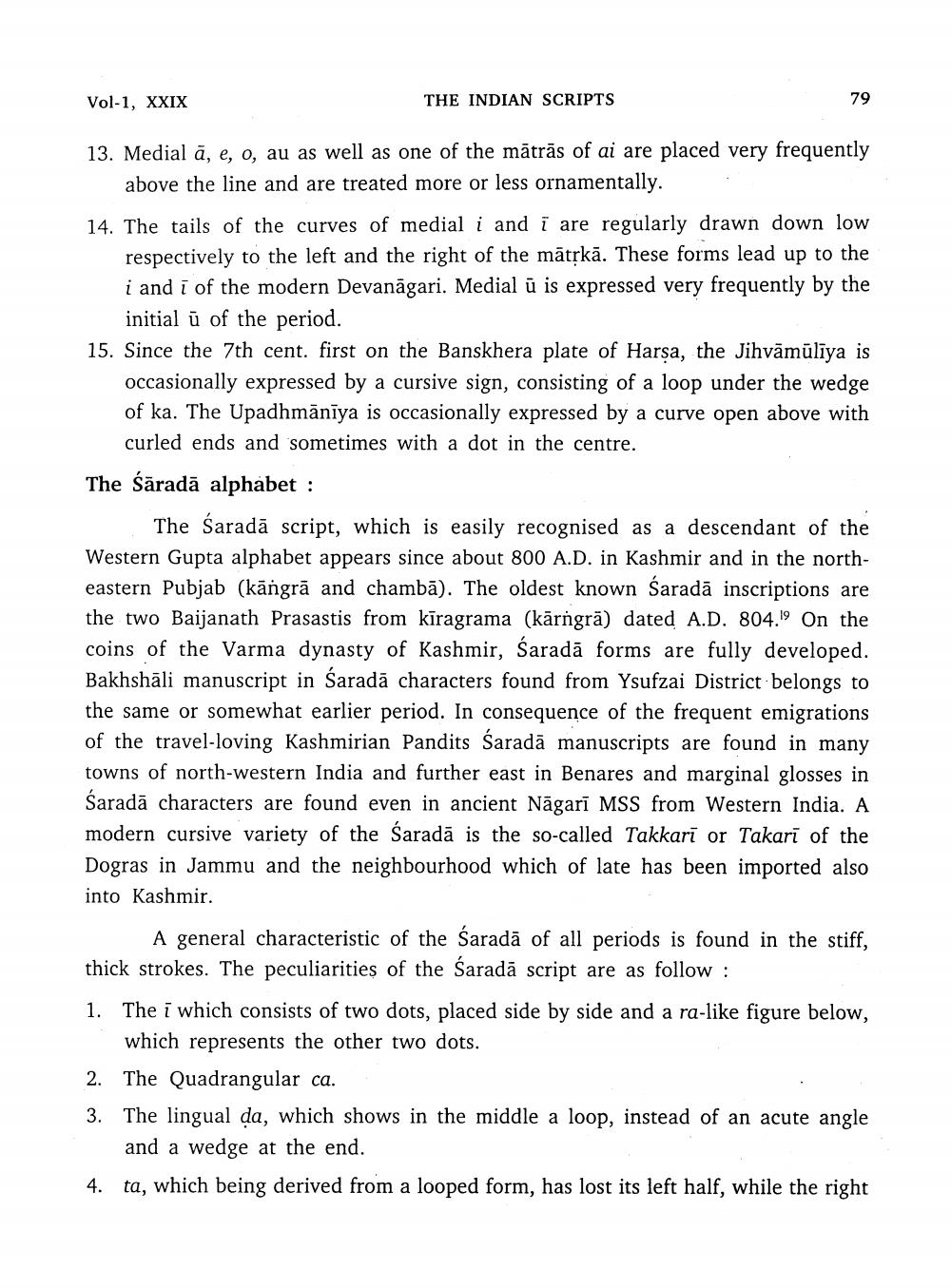________________
Vol-1, XXIX
THE INDIAN SCRIPTS
79
13. Medial ā, e, o, au as well as one of the mātrās of ai are placed very frequently
above the line and are treated more or less ornamentally.
14. The tails of the curves of medial i and i are regularly drawn down low
respectively to the left and the right of the mātrkā. These forms lead up to the i and i of the modern Devanāgari. Medial ū is expressed very frequently by the
initial ū of the period. 15. Since the 7th cent. first on the Banskhera plate of Harsa, the Jihvāmūlīya is
occasionally expressed by a cursive sign, consisting of a loop under the wedge of ka. The Upadhmānīya is occasionally expressed by a curve open above with
curled ends and sometimes with a dot in the centre. The śāradā alphabet :
The Saradā script, which is easily recognised as a descendant of the Western Gupta alphabet appears since about 800 A.D. in Kashmir and in the northeastern Pubjab (kāngrā and chambā). The oldest known Śaradā inscriptions are the two Baijanath Prasastis from kīragrama (kārngrā) dated A.D. 804.19 On the coins of the Varma dynasty of Kashmir, śaradā forms are fully developed. Bakhshāli manuscript in Saradā characters found from Ysufzai District belongs to the same or somewhat earlier period. In consequence of the frequent emigrations of the travel-loving Kashmirian Pandits Saradā manuscripts are found in many towns of north-western India and further east in Benares and marginal glosses in Saradā characters are found even in ancient Nāgarī MSS from Western India. A modern cursive variety of the Saradā is the so-called Takkarī or Takarī of the Dogras in Jammu and the neighbourhood which of late has been imported also into Kashmir.
A general characteristic of the Saradā of all periods is found in the stiff, thick strokes. The peculiarities of the Saradā script are as follow :
1. The i which consists of two dots, placed side by side and a ra-like figure below,
which represents the other two dots. 2. The Quadrangular ca. 3. The lingual da, which shows in the middle a loop, instead of an acute angle
and a wedge at the end. 4. ta, which being derived from a looped form, has lost its left half, while the right




